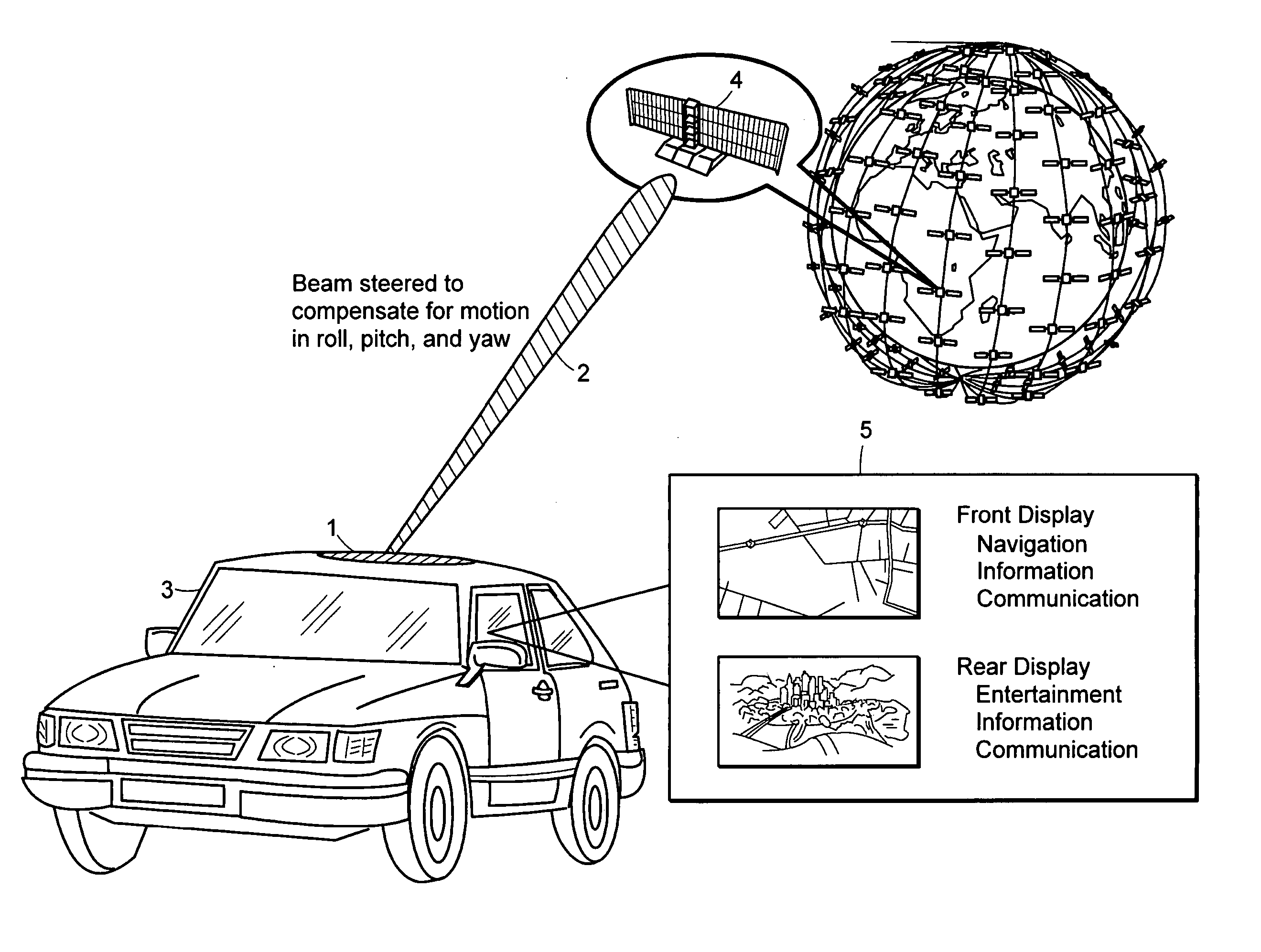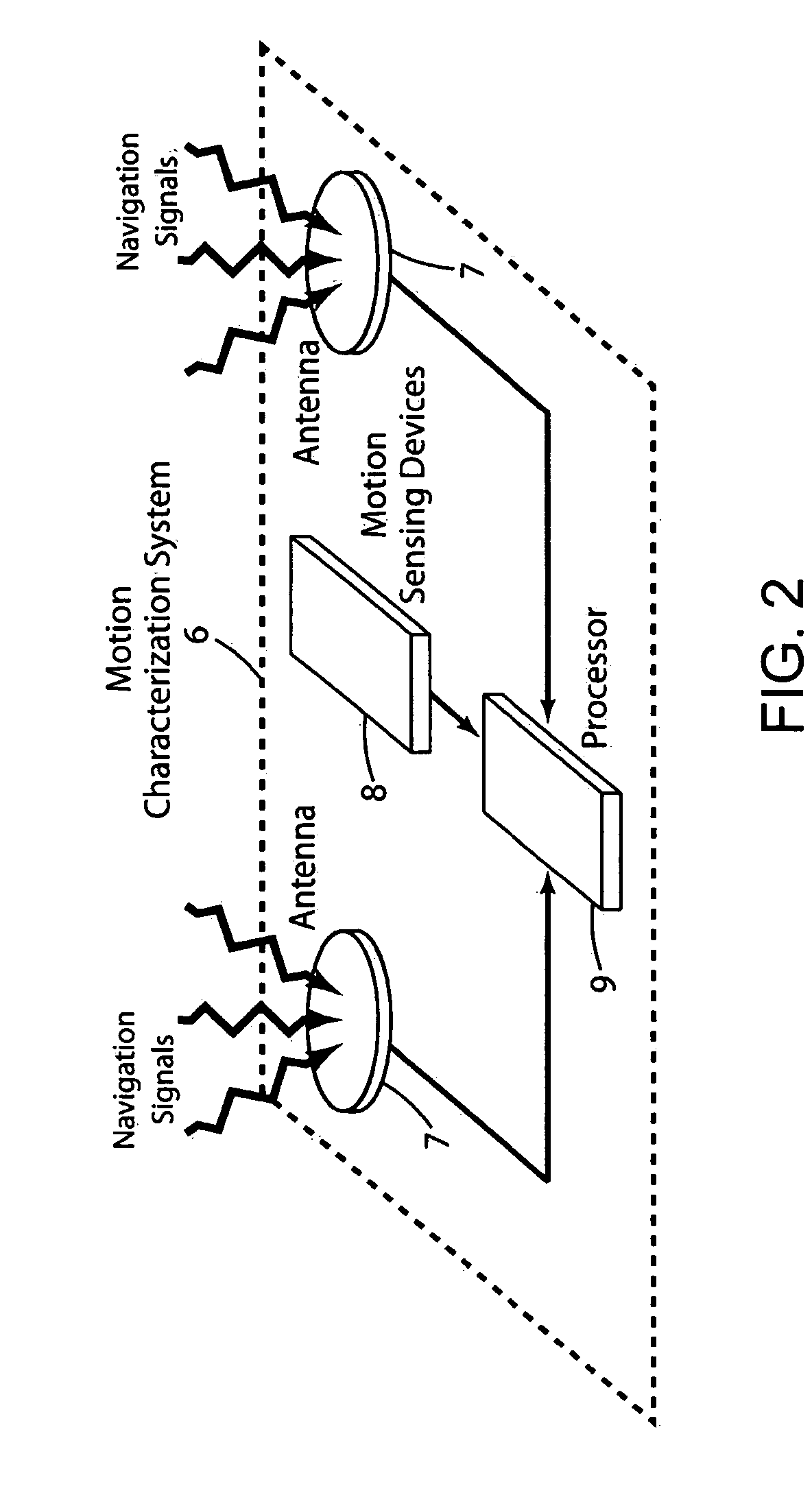Attitude measurement using a single GPS receiver with two closely-spaced antennas
a technology of gps receiver and antenna, applied in direction finders, navigation instruments, instruments, etc., can solve the problems of requiring costly hardware components, limiting the maneuvering on the platform, and not taking full advantage of the available gps and imu measurements, so as to improve accuracy and reduce cost. , the effect of cost advantages
- Summary
- Abstract
- Description
- Claims
- Application Information
AI Technical Summary
Benefits of technology
Problems solved by technology
Method used
Image
Examples
Embodiment Construction
A description of preferred embodiments of the invention follows.
The current explosive growth in mobile vehicle display products is accompanied by increased demand for robust access to high-quality spatial information and to broadband data sources, such as streaming video, digital television, and high definition television (HDTV). The present invention can be used to facilitate delivery of multimedia broadband data to users in vehicles, such as cars, planes, trains, boats, and airplanes. New generations of satellite-based broadband delivery systems use Low Earth Orbit (LEO) satellites operating at 20 GHz or higher frequencies and require precise pointing of highly directional antennas to achieve high data rates.
The present invention permits use of poor performance, low-cost motion sensing devices both to enable accurate, affordable, antenna pointing solutions for broadband mobile communications and to permit the robust delivery of spatial information to both military and commercia...
PUM
 Login to View More
Login to View More Abstract
Description
Claims
Application Information
 Login to View More
Login to View More - R&D
- Intellectual Property
- Life Sciences
- Materials
- Tech Scout
- Unparalleled Data Quality
- Higher Quality Content
- 60% Fewer Hallucinations
Browse by: Latest US Patents, China's latest patents, Technical Efficacy Thesaurus, Application Domain, Technology Topic, Popular Technical Reports.
© 2025 PatSnap. All rights reserved.Legal|Privacy policy|Modern Slavery Act Transparency Statement|Sitemap|About US| Contact US: help@patsnap.com



